My high school science teachers were comedians. Whether I was learning about physical changes or chemistry, they made the class laugh, even when we were learning that hallmark of high school chemistry, the periodic table of elements. What tools are now available to support learning and understanding of the periodic table? In this blog entry, we will go over a few that you may find useful.
Introducing the Periodic Table
In case you missed the history of the periodic table, it took almost a century to organize. Several scientists spent their lives working on this table. The periodic table is awe-inspiring for this reason alone. It is also fun to consider because it makes the following possible:
- Analyzing reactivity among elements
- Predicting chemical reactions
- Understanding trends in periodic properties among different elements
- Speculating on the properties of undiscovered elements (source)
Learning the periodic table may be an obstacle for some, but for others, it represents a gateway to another world. Watch this video for a bit of background on the periodic table of elements:
Let’s take a look at some of the interactive periodic tables you can use with students.
Interactive Tool #1: Google’s 3D Periodic Table

Google recently announced the availability of their version of a 3D periodic table. The table offers information about each of the elements, and you get to explore their properties. You also see its Bohr model representation which shows a planetary diagram of the components. In this model, negatively charged electrons orbit a small, positively charged nucleus.
You can see the Bohr model for several elements below. These include two reactive nonmetals. One of the elements shown is the most common element in the universe. The other is clear as gas and pale blue as a liquid. Can you guess which they are?

The 3D Periodic Table is one of many Google Arts & Experiments available online. Here are a few other 3D experiments.
Interactive Tool #2: PBS Learning Media
PBS Learning Media offers an interactive periodic table as well. One item that will catch your attention is the mystery elements activity.
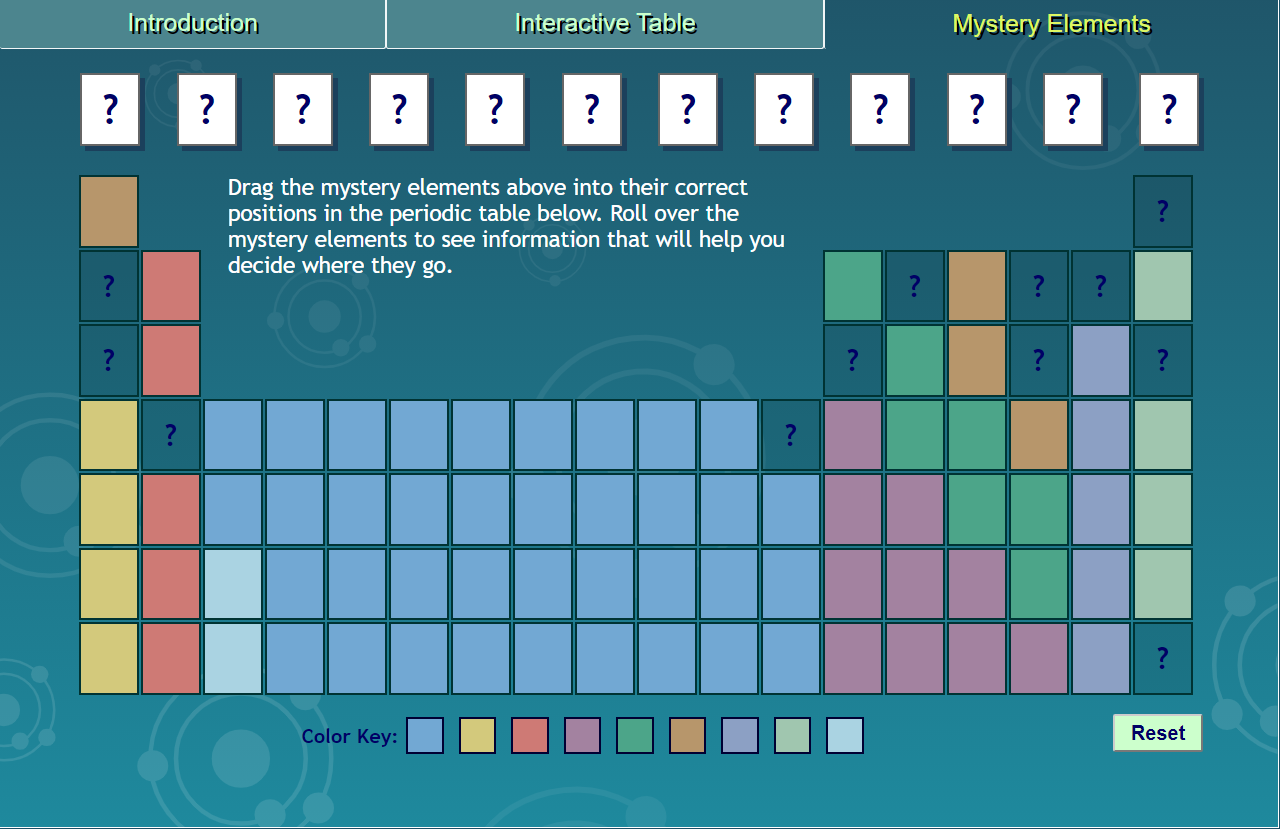
You must drag mystery elements into their correct positions in the periodic table. Each provides information you can use to decide placement. Also, PBS Learning Media offers a lesson plan for grades 6-8 and 9-12 to introduce the periodic table.
Did You Know?
This comic book, Science Comics: The Periodic Table of Elements: Understanding the Building Blocks of Everything, is coming out in March, 2023 and may be worth sharing with students.

Interactive Tool #3: Elements Wlonk
Wlonk provides one of the easiest, most information-rich interactive periodic tables. It includes wonderful examples of the role each element plays in our lives. For example, titanium (as shown below) is what we rely on for aerospace. You not only find out what elements are useful or used for, but you also learn a bit about the elements themselves.
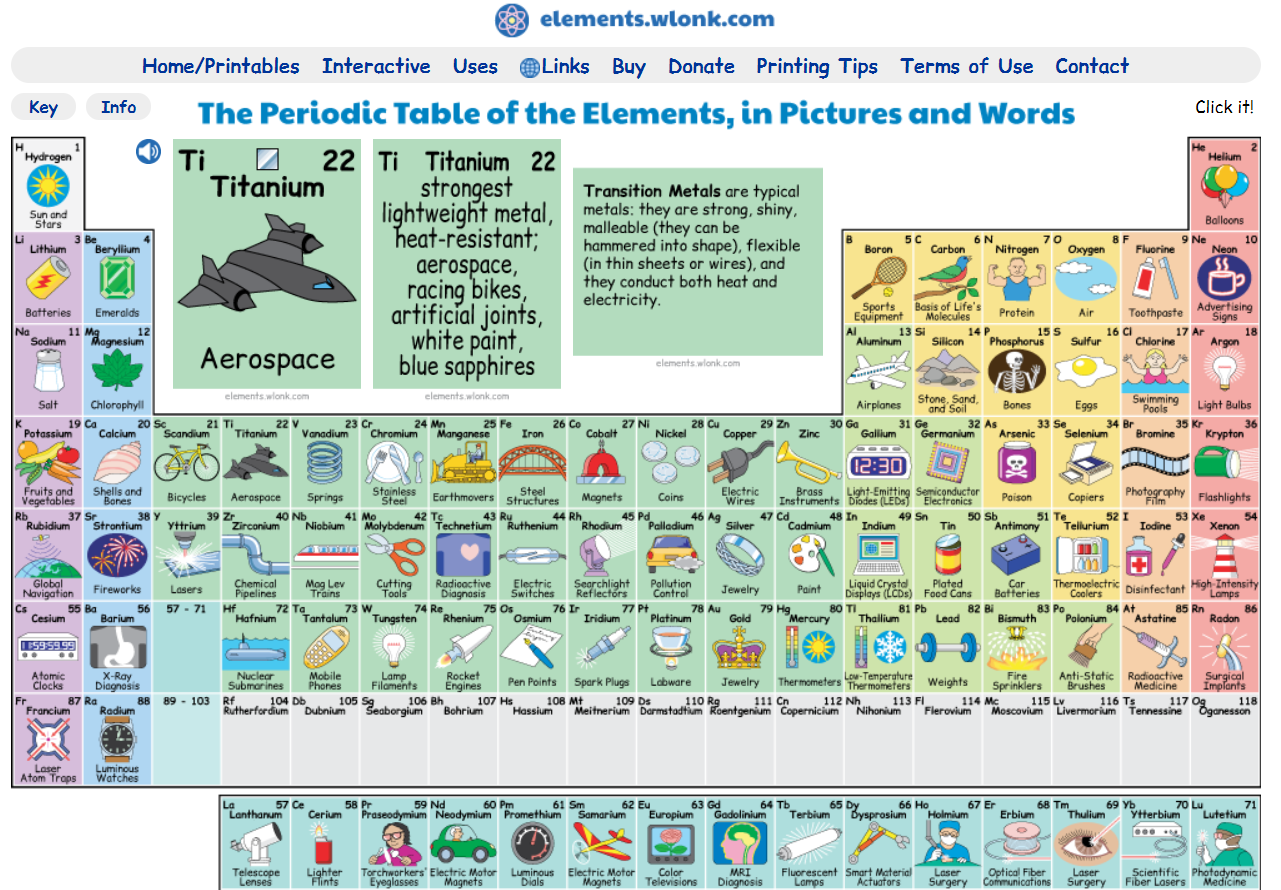
Want to see other clever visuals for the periodic table? Check out the Royal Society of Chemistry’s table.
Interactive Tool #4: Mr. Nussbaum Learning + Fun
Do you need a quick tool to learn more about the periodic table and then want to review with a game to quiz the students after? This interactive resource makes that easy to do. The game has a timer, keeps track of your score, and more.
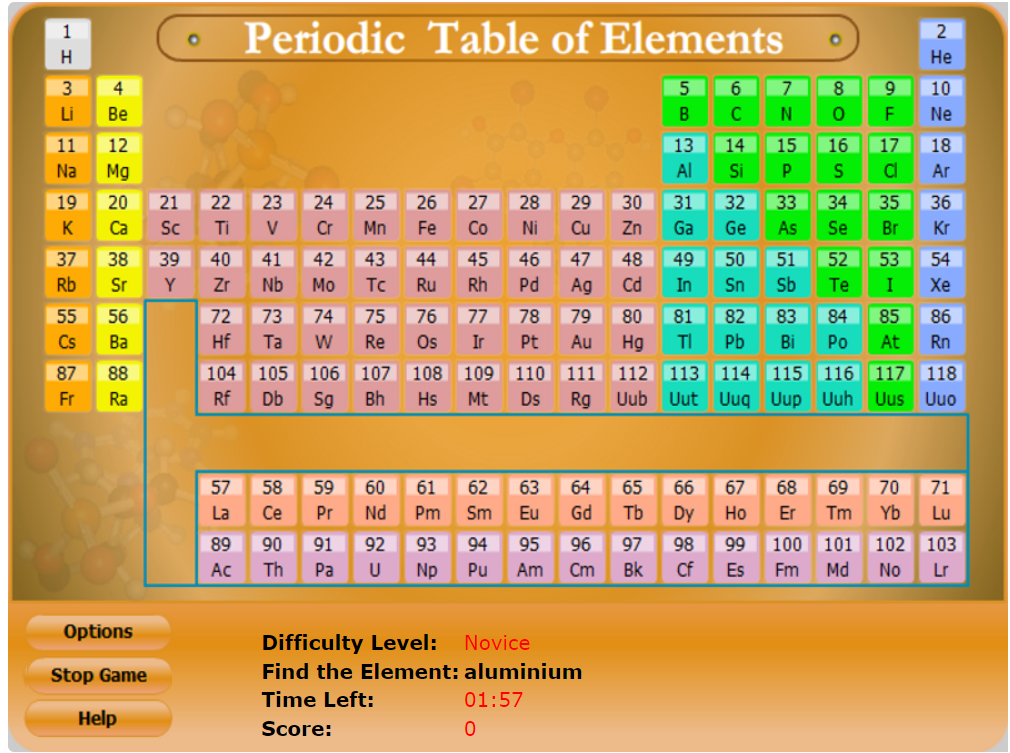
Students can set the game’s difficulty level to novice, beginner, medium, advanced, or expert. Give it a try. For those of you that may want your students to play with the elements, consider this game. It is a periodic table game of battleship. Another game is Atomidoodle, available for Android devices.
Click to Learn with Mr. Nussbaum’s Interactive Table
Interactive Tool #5: Fisher Scientific
The Fisher Scientific Periodic Table of Elements makes it easy to sort elements. You can see which are gases, liquids, solids, or unknowns. You can also see which are metals and nonmetals.
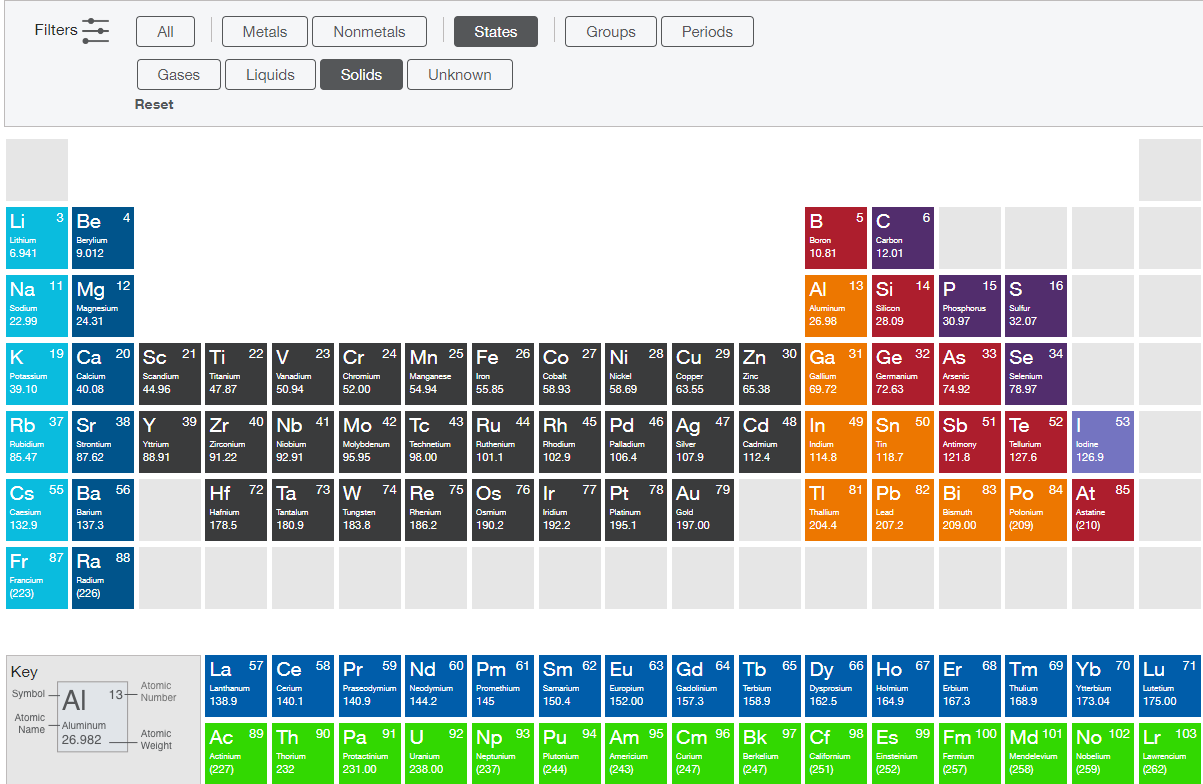
But Wait; There’s One More!
A bonus interactive periodic table of elements is Ptable. All the different ways you can interact with the elements using this table are incredible.
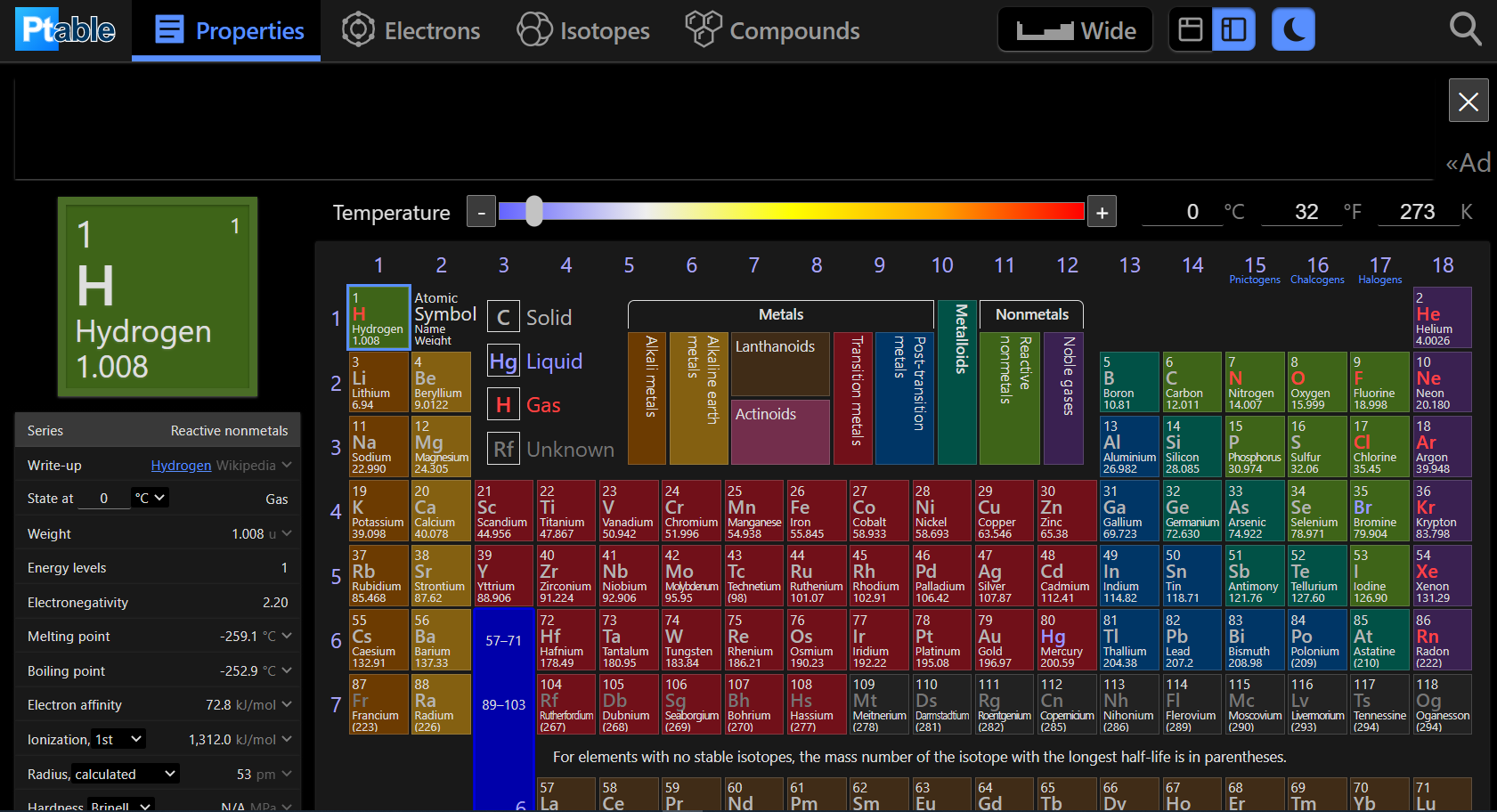
It’s Element-ary, My Dear
Still wondering what those two Bohr Models were at the start of this blog entry? Hydrogen and oxygen. When I see what digital tools we have now, I often wish they had been available when I was learning science. These interactive periodic tables of elements tools can make learning less tedious!
Update – Periodic Table Games
After I wrote this blog entry, science teachers on Facebook asked, “Any ideas for fun periodic table games?” Here are a few of the ones they came up with:
- Bingo! “Write names in boxes, call out numbers and symbols. My students love it,” says Jana Blake Chapline.
- Breakout: “I create a breakout/lockbox with periodic table and a project where they have to write a word or phrase using only chemical symbols.” (Cyndia Larrimore)
- Chemical formula: “I let my kids pick a food, drink, or product, then Google the chemical formula. Then they make a poster or write the formula on a class poster,” suggests Sheila Libecap.
- Periodic table battleship: “Use file folders and add the periodic tables to top and bottom. Laminate and use dry erase markers,” says Dani Stone.
- Quick Six: This free game encourages students to become familiar with the chemical elements. (Susan Waymire)
- Relay Race: “I use a relay race. Index cards with the symbol (color coded for solid, liquid, gas). The groups have a table. The first student from each team runs down. I give them a card and pick…atomic mass to search. They run back, find the number, then run back and tell me. There are so many things I can choose for them to find out. Since they are using the table, it is a fun way to look around at all the details (e.g. groups, rows, mass, number, state at STP, metal, non-metal, metalloid…woohoo!” (Jill Parliman Kibler)
Feature Image Source
Screenshot by author.

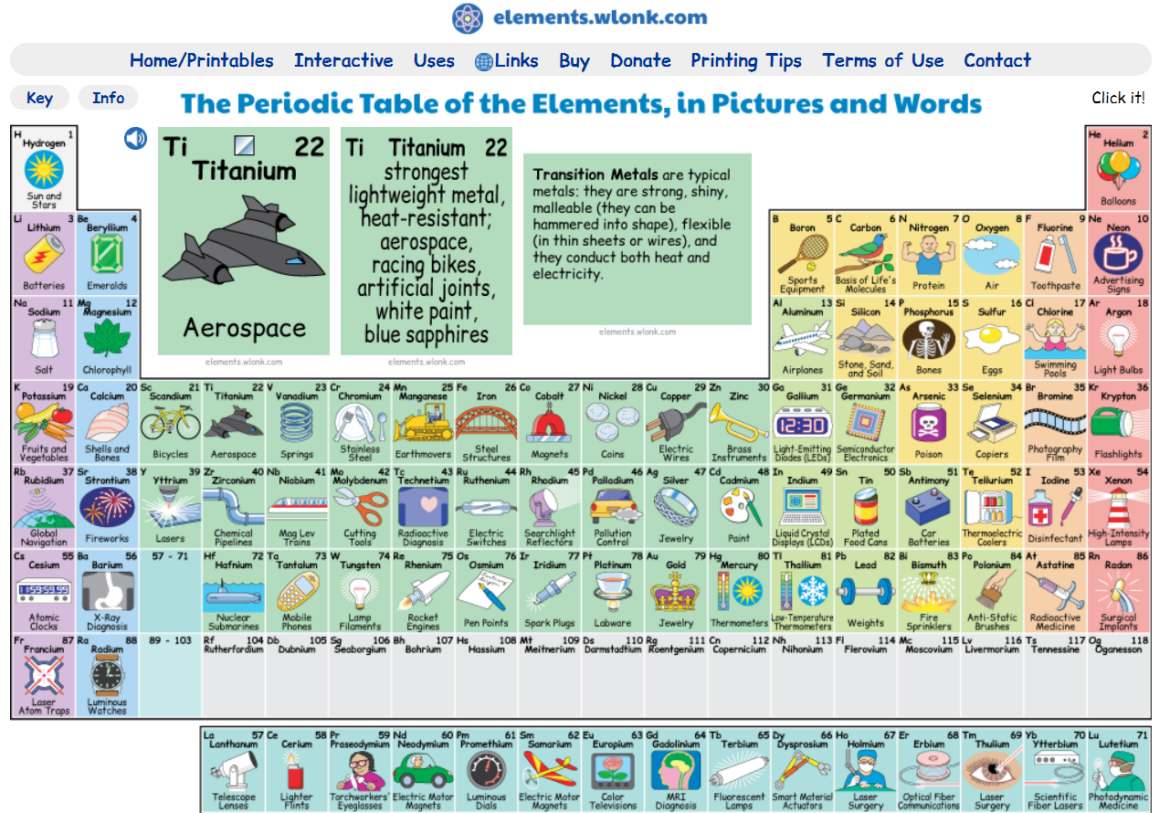
2 comments
Looks compelling
Thanks, Louise.